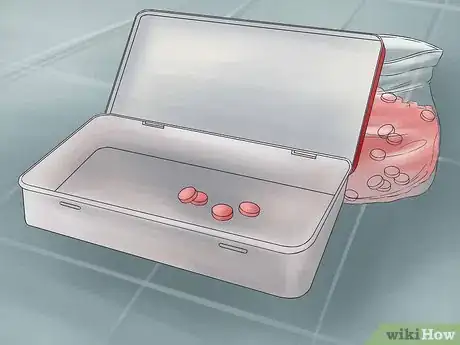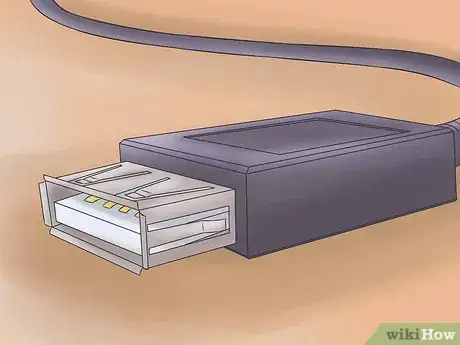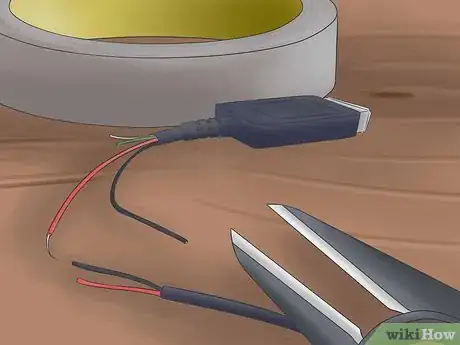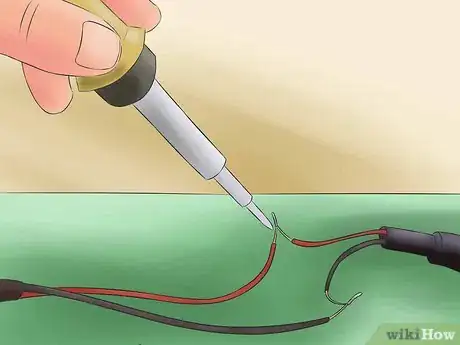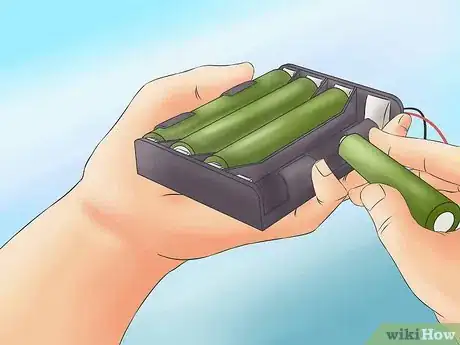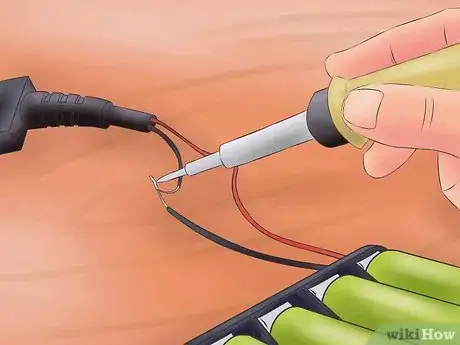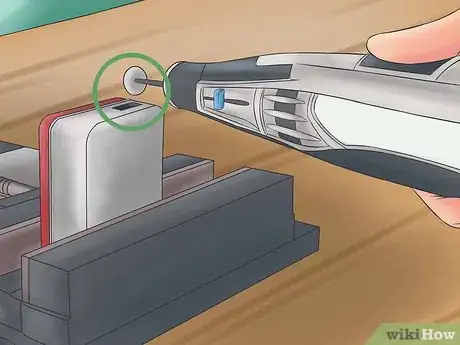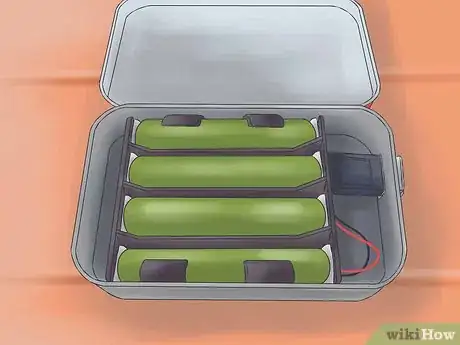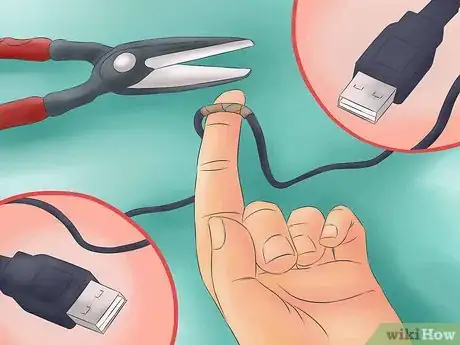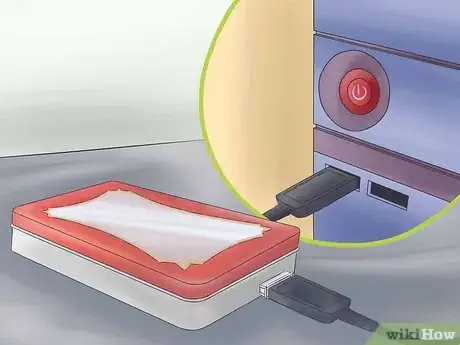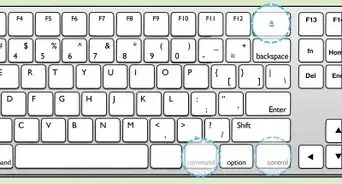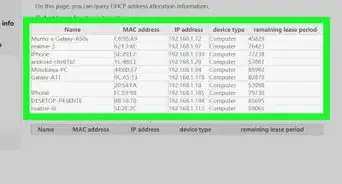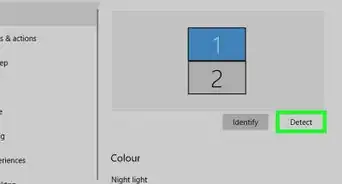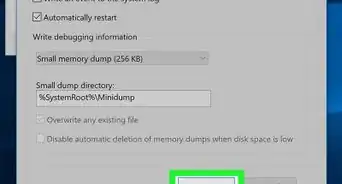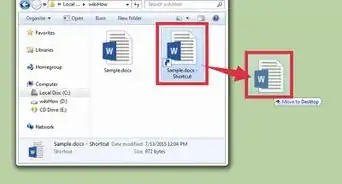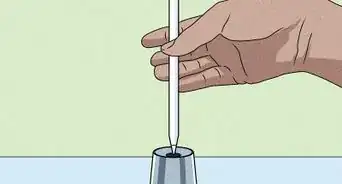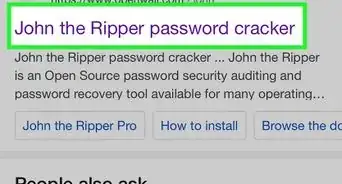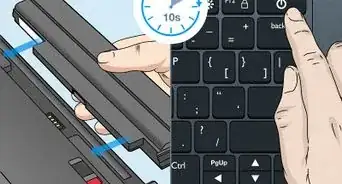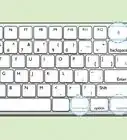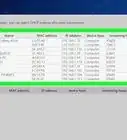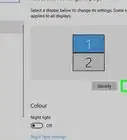Learn how to build your own portable USB charger from an Altoids Mints tin
X
wikiHow is a “wiki,” similar to Wikipedia, which means that many of our articles are co-written by multiple authors. To create this article, 31 people, some anonymous, worked to edit and improve it over time.
This article has been viewed 369,527 times.
Learn more...
Ever caught nowhere near a charger and you just need to use your device? With this easy to make portable charger you'll never be caught without power ever again. And this charger can be recharged so you can recharge on the go again and again.
Steps
-
1Clear all the mints and paper out of the Altoids tin (mints can be put in a plastic bag so they can still be eaten.)
-
2Find a female USB port. These ports can frequently be found on USB extension cords.Advertisement
-
3If using a USB extension cord, cut the wire as far away from the part in which you plug in the wire you wish to extend. Strip the wires Find the black (-) and red (+) wires. Make sure these are separate from the green and white data wires.
-
4If your wires are very short, (less than 9 inches) you may want to extend them by soldering wire to them. Be careful not to add too much as it may not fit in the Altoids tin. About 9 inches (22.9 cm) branching off of the female USB should suffice.
-
5Put your 4 rechargeable AAA batteries into your battery holder. For now, they do not need to be charged. (Hint: rechargeable AAA batteries can cheaply be bought on eBay or a similar auction site. These batteries are rated by the amount of power they can store not the power that they output. The units used are milli-Amp hours (mAh), which can be explained as the current (in milli-Amps) needed to fully discharge the battery in an hour. A 1000 mAh battery will last twice as long on one charge as a 500 mAh battery. AAA battery holders can cheaply be bought from Radio Shack, make sure it will fit in the Altoids tin--this usually means to buy the thinner square looking one--see picture in Things You'll Need.)
-
6Connect the wires from the battery holder to your USB wires. Remember red to red and black to black. Soldering is usually the way to go. Other methods are twisting the wires together, but this is unreliable. Remember to cover the exposed connected wire in insulated material (like PVC or electrical tape) to avoid letting the positive and negative wires touch.
-
7Make a square shaped hole slightly larger than a USB port in one side of the Altoids tin. If using a Dremel, beware of sparks that can ignite flammable materials. Make sure it is one of the shorter sides--not the sides above or below the text--to the left or right only.
-
8Put your battery holder connected to your female USB in the Altoids tin. Make the ON/OFF switch (if your battery holder has one) to the battery holder is up so that when you open the tin you see it the female USB port not stick out of the USB port, but have it line up so it doesn't stick out.
-
9Hot glue the female USB port in place. You can also put double sided tape or hot glue on the battery holder so it doesn't move.
-
10You may close the tin. Your charger is now complete. If your batteries are uncharged, follow the last step to charge.
-
11Make a male to male USB cable if you do not already have one. Cut the ends off 2 USB cables, leaving as much wire possible after the USB connector. Strip the wire exposing the colored wires. You may cut the white and green wires. Strip the red and black wires. Connect the wires together (red to red and black to black) by soldering or wire twisting (unreliable.) Cover the individual wire connections together with electrical tape, having 2 separate pieces (cover the black to black separately and red to red separately.) Then after the reds and the blacks are separately covered in tape, you can cover these connections with electrical tape so you are left with a single wire.
-
12To charge--using your Male to Male USB cable, plug one end into your computer (or USB AC Adapter) and one into the USB port of your charger. Your charging. After a few hours, charging is complete.
Advertisement
Community Q&A
-
QuestionHow do I connect the batteries to the USB connector?
 Community AnswerUse a battery holder from an old remote or even a toy car that takes batteries. Just solder the wire from the battery holder to the USB connector and you are all set.
Community AnswerUse a battery holder from an old remote or even a toy car that takes batteries. Just solder the wire from the battery holder to the USB connector and you are all set. -
QuestionHow will I know if I did it wrong?
 Community AnswerWhen your phone isn't charging, then you have done it wrong.
Community AnswerWhen your phone isn't charging, then you have done it wrong. -
QuestionCan I use lithium ion batteries instead?
 Community AnswerTheir voltage does not match by AAA. You could use them by adding a voltage controller (5 volt, 1 / 1.5 amp), then it would work.
Community AnswerTheir voltage does not match by AAA. You could use them by adding a voltage controller (5 volt, 1 / 1.5 amp), then it would work.
Advertisement
Warnings
- Don't leave device charging when you aren't present. You don't have to watch it like a hawk but you may want to check it every 2 hours to check for overheating (Rare.)⧼thumbs_response⧽
- Do not wet or expose to fire or heat or freezing temperatures.⧼thumbs_response⧽
- As with anything electrical, use caution when operating and making.⧼thumbs_response⧽
- When charging the charger, make sure the batteries do not get VERY VERY hot. Warmness is okay but if it becomes so hot you cannot touch it without getting serious burns is not. Immediately throw out the charger if this occurs.⧼thumbs_response⧽
- Beware of jealous friends that may try to steal you totally awesome charger.⧼thumbs_response⧽
- Know the risks: I am not responsible to potential damage to you or your devices⧼thumbs_response⧽
- Do not use or store in extreme cold or heat.⧼thumbs_response⧽
- Browning around the hole from the Dremel is normal--it is from the heat of the sparks.⧼thumbs_response⧽
- If using a Dremel to make a hole in your Altoids tin, beware of sparks. If you see sparks make sure you are careful not to ignite a flame on flammable material. Do not let sparks touch you, your clothes, or your hair. If you have very large sparks, make sure they do not ignite anything. If sparks are large, lower the speed.⧼thumbs_response⧽
- Smoke from the metal on metal from the Dremel carving a hole is not to be inhaled.⧼thumbs_response⧽
- Using a too powerful charger may overheat batteries and cause the batteries to leak. Suitable chargers are: a computer's or laptop's USB port or an AC USB port with a voltage of 5 volts and a current of less than 1000mA (1A.) iPhone chargers, HTC USB chargers, and Kindle chargers are fine. You can check your AC USB charger this by reading the back or side of your charger under the output and verifying the current is less than 1000mA. 500mA is recommended. I STRONGLY recommend you use a computer's USB port.⧼thumbs_response⧽
- Do not short the batteries.⧼thumbs_response⧽
- This may not charge iPods and all devices.⧼thumbs_response⧽
- Do not charge for extended periods of time. NEVER overnight. 4 hours maximum. This circuit does NOT stop charging after the batteries reach a certain voltage; overcharging will destroy the batteries.⧼thumbs_response⧽
Advertisement
Things You'll Need
- Female USB connector (or USB extender--see steps)
- 4 rechargeable NI-MH AAA batteries with a current of 500mA to 1000mA
- 4 AAA battery holder
- Altoids tin (or similar metal box, flavor doesn't matter)
- Wire stripper
- Soldering iron (optional, recommended)
- Wire (optional)
- Hot Glue
- Hot Glue Gun
- Something to carve a hole in the Altoids tin (ex. Dremel)
About This Article
Advertisement
